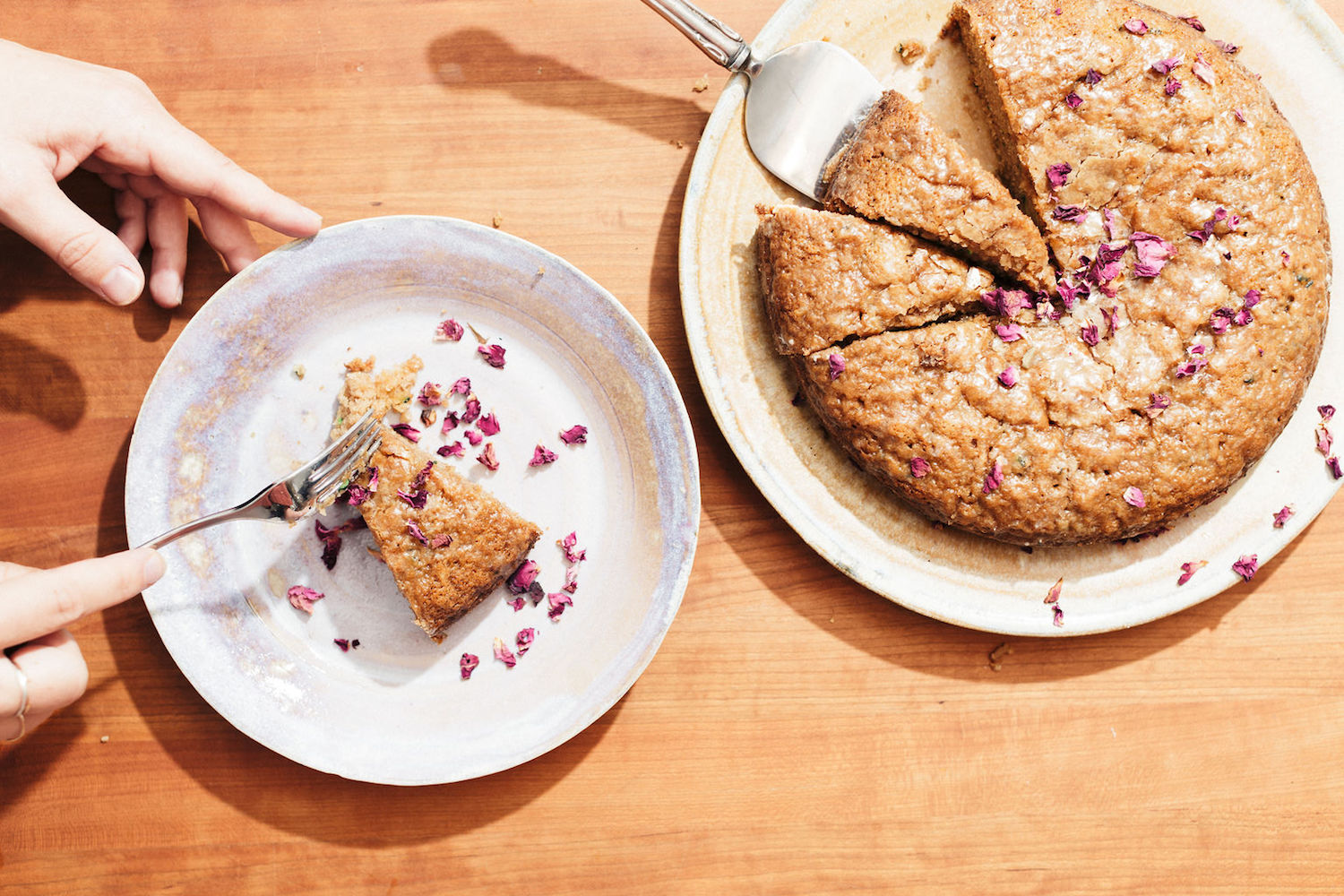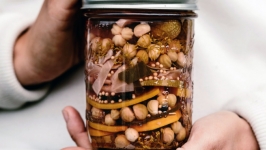Chaga Mushroom: The Birch’s Best Kept Secret
It's hard to ignore the birch tree. Chances are you’ve taken note of their slender trunks, standing out among the muted tones of conifer and maple like chalk tally marks, even if you couldn’t put a name to a face.
Stands of striking white paper birch and luminescent yellow birch make for a dynamic forest-scape in the northern woods. Even without their signature peeling bark, birch would catch our eye in autumn when their leaves turn a brilliant ochre, and again when winter ice bends their delicate treetops toward the earth. That arching birch in winter drew the attention of poet Robert Frost, who wrote about young children swinging from those leaning branches.
The Frost poem was what usually came to my mind when I thought of birch trees (sucker for poetic reflection that I am), until the day I arrived home to find a grocery bag full of what appeared to be charred, black-and-gold pieces of wood hanging on my front door, alongside a handwritten note introducing me to chaga.
Foraging enthusiasts—excited as we are about wild foods—are often quick to share both knowledge and collected harvests. But I hadn’t expected the bounty that my backcountry-caretaker friend left at my door that day. As I dove into research on chaga mushroom, the quantity of the gift made sense. Once chaga gets on your radar, you realize that it is everywhere, and that often it is giant.
Also known as clinker polypore, chaga is a hard, irregularly shaped fungus that grows on living birch trees in very cold climates. Appearing much like a burnt, protruding section of tree, chipping off a bit of chaga’s surface reveals the signature bright-gold-orange interior that helps makes it such an easily identified wild edible. Though it is often fist-size or smaller, on more than a few occasions I have peered up into a leafy canopy and spied a chaga the size of my head growing out of the side of an older tree.
Chaga has been consumed for centuries in Northern Europe and Asia as tea, but the commercial market for the fungus has only recently taken off in the United States. A quick search for chaga products will lead you to a plethora of drinks, tinctures and creams. Considered by many to be a “superfood,” there is certainly a body of promising research on chaga’s role in disease prevention and general health, and the medical interest in the fungus is growing. But when it comes to chaga’s worth in your kitchen, the mushroom’s benefits are undeniable.
A true culinary chameleon, wild chaga is a great addition to recipes both sweet and savory, in foods as well as beverages. And since it is fairly simple to identify, collect and store, harvesting the mushroom yourself is much kinder on your wallet than purchasing it elsewhere.
Upon spying that charred growth on your neighborhood birch, simply cut off your desired quantity from the mushroom’s surface— no more than one-third of what you find, as with most foraging—making sure not to damage the tree in the process. Once removed, chaga can be hammered into small pieces and frozen in airtight bags or dried in a dehydrator set on low and stored in jars. Properly stored chaga should last for many months until you’re ready to use it.
Nearly all of the ways I use chaga begin with making a tea. Strategies for brewing up chaga vary widely from person-to-person, but I generally place a few chunks of dried mushroom in a full pot of water, bring it to a boil and hold it at a low simmer for about an hour until the tea reaches a dark amber color. Those chaga pieces can then be re-dried and used up to three more times until they no longer make a dark and flavorful tea. Tea brewed up from the mushroom is earthy and slightly sweet and can be enjoyed as a drink both hot and iced, mixed into your morning coff ee (my favorite way to drink chaga) or simmered with spices as chaga chai.
When cooking with chaga, I will often swap in the tea for half of the stock in soup recipes as well as in rice dishes such as pilaf or jambalaya, the tea adding a layer of flavor similar to traditional mushroom stock. The sweetness of the tea is also lovely in those baked goods best enjoyed by the fire on chilly days. A few tablespoons of strongly brewed chaga added to the batter or dough of coffee cake, molasses and oatmeal cookies and spiced cakes, such as apple, zucchini or pumpkin, brings out the richness in those recipes while adding that chaga-ness that is all its own.
Nowadays when going for walks in the birch-heavy woods of the North Country, I nearly always come across a few trees with those signature burnt, craggy growths. And since chaga often appears in greater quantities than one household needs, a jar (or grocery bag, perhaps) of dried mushroom makes the perfect gift for other foraging enthusiasts looking to try a new and versatile wild edible.
Note: As with all foraging (and especially with mushrooms), you should refer to field guides and experts for 100% positive identification before consumption. Additionally, consult with a doctor if you have any questions or concerns about specific health issues, medication interactions, allergies, pregnancy or breastfeeding.








